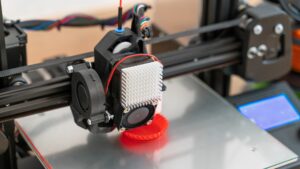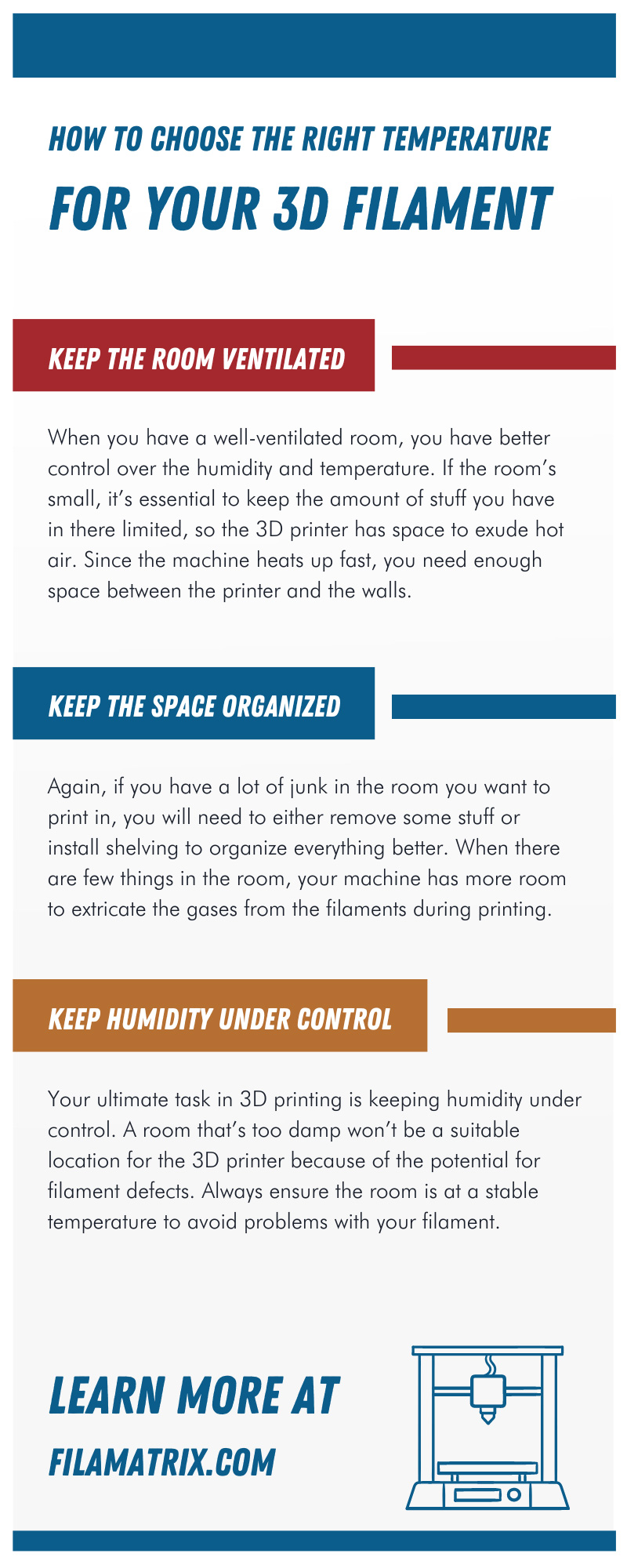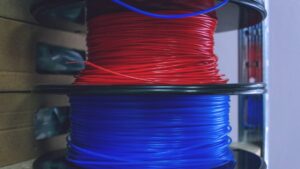
A Look at the Different Densities of 3D Printing Materials
There’s so much to learn about 3D printing materials. Come and find out what to look for when examining the different densities of 3D printing filaments.
844-810-1385
Whether you’re a beginner or an expert at using the 3D printer, it’s always a great reminder to learn how to choose the right temperature for your 3D filament. Seeing as every 3D printer fiber’s temperature for the nozzle and bed is different, you will need to learn the right temperature setting for yours. Continue reading to learn how to find a suitable temperature for the printer, the printer bed, and the 3D printer room.
Nylon is one of the best fibers to work with, but it is also tough to use on a 3D printer if you don’t have the correct temperature set. When working on a project that has nylon, cooling fans shouldn’t be on, as whatever you’re printing has to keep the heat while on the bed.
Make sure the filaments dry before printing, as they’re hygroscopic, which means they absorb moisture from the air. Keep this material dry while printing, and do not turn on the cooling fans when working with nylon.
Furthermore, your bed temperature should be between 70 and 100° C, and the nozzle should be between 240 and 260° C.
There was a time ABS was the most common fiber to work with, but PLA beat it out for the top spot because it’s not as hard to work with as ABS. The slight difference in temperature between ABS to PLA exists because ABS needs to be printed at an elevated temperature, but it’s not a massive difference.
Like nylon, you shouldn’t use cooling fans on ABS, and the filament must be in an enclosure. ABS shrinks fast when you have the cooling fans on; when it shrinks, the fiber warps. When the filament is enclosed, it doesn’t cool down as quickly. Make sure to keep the nozzle temperature between 210 and 250° C, and keep the bed temperature between 80 and 110° C.
Like all other flexible filaments, TPU is a fun material choice; however, it has drawbacks. Flexible filaments are hard to work with because they’re hygroscopic. As expected with nylon, TPU should not have cooling fans on during the printing process, and the printer should be on a lower bed heat setting.
The path TPU takes must be enclosed and shouldn’t be extracted too fast since it bends and stretches on its way out of the nozzle; if it comes out too quickly, it could jam the syringe. Keeping the extraction speed between 15 and 20 mm/s will create better layers.
When creating prototypes with TPU, each one will have different temperature settings. TPU95A is a great filament to experiment with; it’s recommended to keep the extruding temperature between 210 and 250° C, but the best temperature to set the nozzle at is 230° C. For the nozzle, you don’t want to exceed 70° C, and keep the bed heat at a constant temperature of 70° C.
The newest filament to hit the market is PETG. This fiber combines all of PLA and ABS’s greatest qualities. When working with this filament, make sure to have blue tape on the bed, as this helps the filament stick better. The great thing about this filament is you can use cooling fans with it.
Even though this filament is low maintenance, you still need to ensure the nozzle and bed temperatures are set correctly. For your nozzle temperature, you want to keep the heat between 220 and 250° C, and the printer bed should not exceed 75° C.
PLA is a popular fiber choice because it’s the most versatile filament to print models with. The standard temperature range varies between 180 and 210° C, and the recommended nozzle temperature is 210° C. You won’t have any trouble cooling this filament down, as you can use cooling fans during the printing process.
The room temperature matters a lot for 3D printing. You not only want it to be lukewarm, but you want to ensure that the conditions are consistent and are set right before using a 3D filament. For example, PLA cannot print well if the room’s temperature is below 59° C. 3D printed layers of PLA could separate, causing severe defects in the final product.
Learning how to use the 3D printer settings is simple enough, but knowing how to set the room’s temperature is essential. Here are a few suggestions to help create a comfortable space to print so you can avoid layer separation and warping, among other 3D printing errors.
When you have a well-ventilated room, you have better control over the humidity and temperature. If the room’s small, it’s essential to keep the amount of stuff you have in there limited, so the 3D printer has space to exude hot air. Since the machine heats up fast, you need enough space between the printer and the walls.
Again, if you have a lot of junk in the room you want to print in, you will need to either remove some stuff or install shelving to organize everything better. When there are few things in the room, your machine has more room to extricate the gases from the filaments during printing.
Your ultimate task in 3D printing is keeping humidity under control. A room that’s too damp won’t be a suitable location for the 3D printer because of the potential for filament defects. Always ensure the room is at a stable temperature to avoid problems with your filament.
As necessary as it is to learn how to set the right temperature on a 3D printer, it’s also essential to learn about the 3D filaments you’re printing with. Every filament is different, and Filamatrix offers the best variety of filaments to its customers. Our filaments have instructions on using the fiber, including the suitable temperature for the 3D printer’s bed. Contact us for more information on our 3D printer filaments.


There’s so much to learn about 3D printing materials. Come and find out what to look for when examining the different densities of 3D printing filaments.

Those interested in 3D printing have a lot to learn on how to use the system properly. Find out what you need to know about 3D printing and humidity levels.

3D printing has many variables that both beginners and experts need to know. Find out what effects temperature has on 3D printer filament.
Get professional insights, industry news, and our latest deals